Leave No Trace: The 7 Principles of Outdoor Ethics
Like many other modern day adventurers, I enjoy sharing my outdoor photos captured in beautiful, awe-inspiring locations on my social media. These are the magical places many people see, hear, or read about, but never get to experience themselves. Through digital mediums, we are able to inspire each other to get outdoors & discover what our amazing world has to offer. However, is all this heavy online influence putting nature at risk for the consequences of overexposure? That is why we have the 7 Leave No Trace principles which provides a framework for enjoying the outdoors while leaving the smallest footprint possible. Continue reading to learn more!
Please note: This post contains affiliate links.
This means that, at no extra cost to you, I may receive a small commission if you make a purchase through my affiliate link.
You may read my full disclosure policy here.
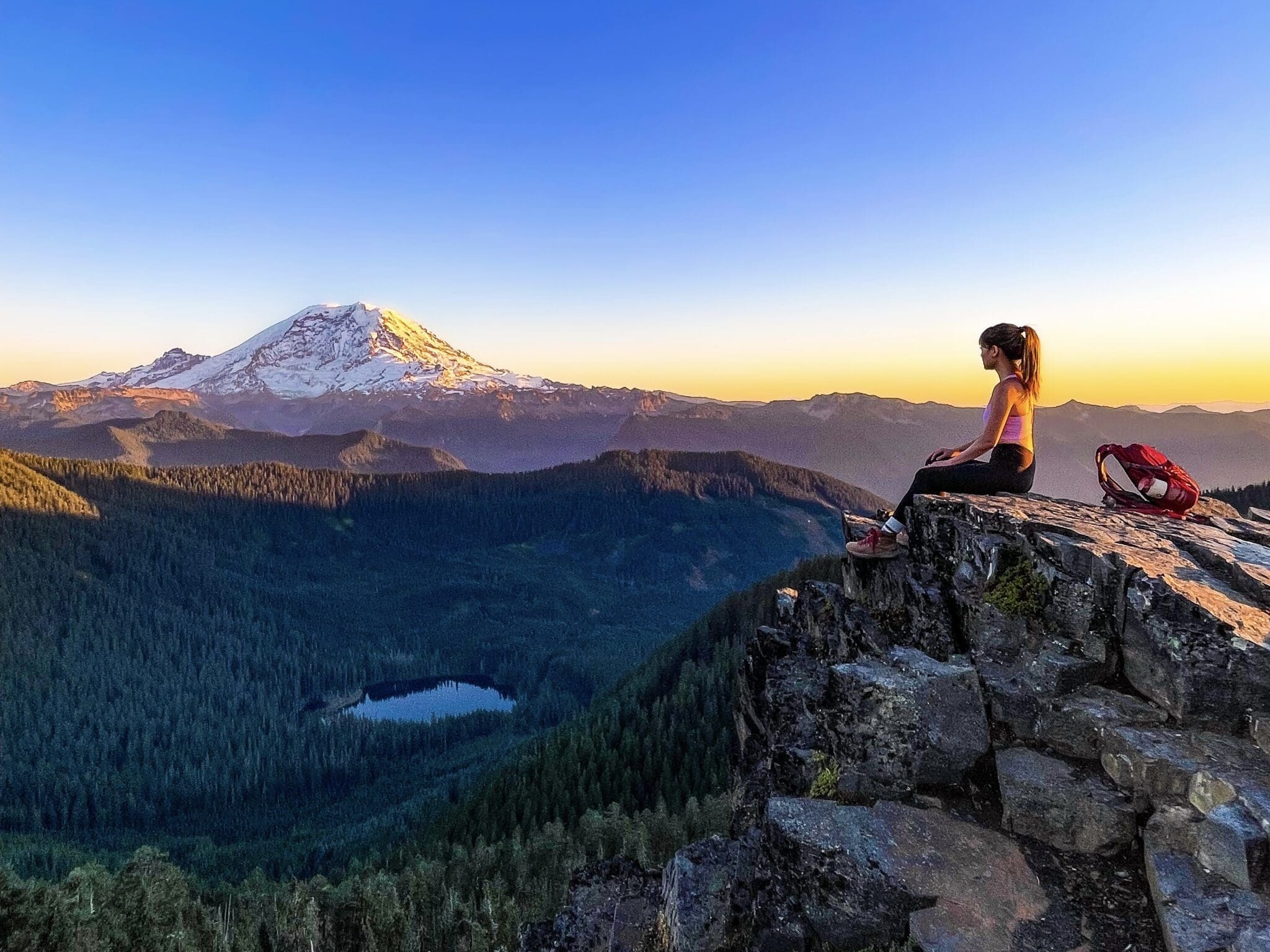
The Outdoors Are Being “Loved to Death”
Our technology driven society allows us to easily discover pristine alpine lakes, fairy tale forests, & majestic snow-capped mountains. With the pressures of obtaining their own epic photo, thousands of people are starting to #optoutside & #exploremore. From a medical perspective, getting outdoors is a great alternative for increasing the activity levels of our rather dormant population & decreasing obesity rates as well as other health-related issues. So how is all this attention becoming a negative thing & what can we do to promote a more positive experience that can be enjoyed by everyone?
I started hiking regularly back in 2010 & in those days I felt as if I had the trails all to myself. Before social media & the emphasis on leave no trace, many people did not know of these sacred natural sanctuaries I would venture off to. I treasured those moments where I would be able to trek up a mountain before dawn, meditate at the summit during sunrise, & practice my outdoor yoga flow in absolute solitude. It was an experience like no other.
Why Is It Important to Leave No Trace?
Fast forward to the present & we find a very different scene on this same trail. Quite often we see obnoxious people drinking beer, creating a loud ruckus, & disturbing the peace. Rather than the fresh smell of pine, you would now make out a faint scent of weed. There is also the large group of people waiting their turn to take selfies by the rocky ledge. Litter is strewn everywhere & I would pick up as much of it as I can. Unfortunately, despite my efforts, most of the long-term damage has already been done. There are several downsides to this sudden influx of hikers, as they say “too much of a good thing can become bad.” The heavy foot traffic on such popular trails has created an increase of soil erosion, damaged vegetation, widening of trails, & increased muddiness.
Now I am not discouraging anyone from getting their dose of nature therapy! Because I have personally reaped many of the health benefits from being outdoors, I truly believe hiking can influence a better world as long as people know how to respect it. Everybody should be able to experience the wonders of our public lands & those that have the additional drive to inspire others may freely do so through their photos & stories, but only by following the seven Leave No Trace principles.
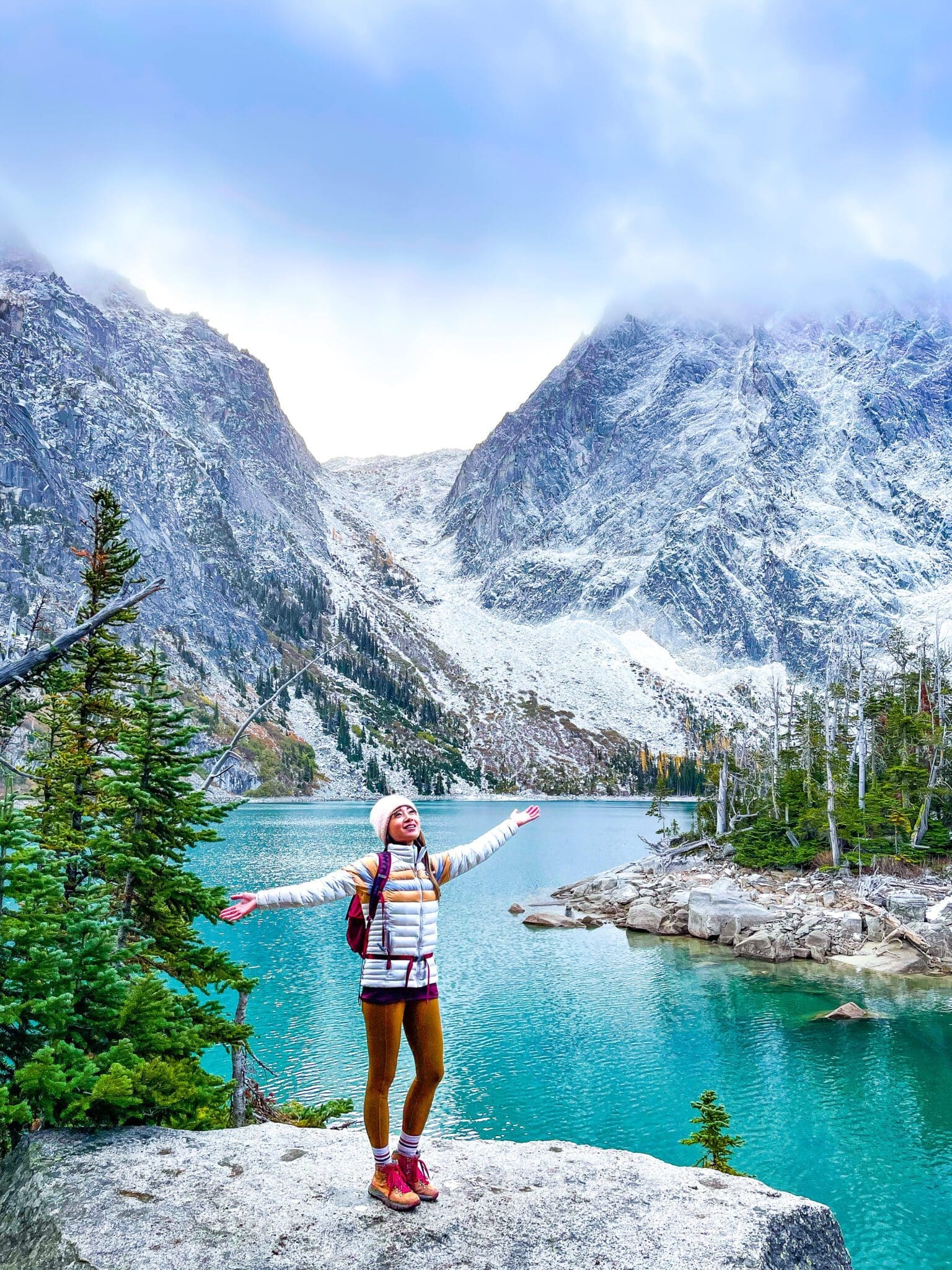
The 7 Leave No Trace Principles
1) Plan ahead & prepare.
Do your research ahead of time so you can plan your trip accordingly. Gather all the important information including weather forecast, current trail conditions & regulations, parking options, as well as level of difficulty. Be prepared with the essential technical gear & clothing, keeping in mind that layering is always best. Also, don’t forget to re-evaluate your trip upon return & note any changes you will make next time.
Well-prepared adventurers can help save backcountry resources & put less people at risk. Successful trips also increase self-confidence & provide opportunities to learn more about nature. Here is a list of some websites to help plan for your next successful outdoor adventure:
- AllTrails – to search for your next hike (I love their mobile app!)
- Hiking Project
- American Hiking Society
- Washington Trails Association – for hikers in the Pacific Northwest
- Recreation.gov – find your next favorite campsite
- The Dyrt
- AccuWeather – most reliable weather resource
- Washington State Department of Transportation (WSDOT) – real-time mountain pass information
- Northwest Avalanche Center – Washington avalanche forecast
2) Travel & camp on durable surfaces.
If our ultimate goal is to enjoy our beautiful public lands for many years to come, we have to be cognizant of how we travel & utilize the outdoors today.
When hiking, avoid stepping onto side brushes & stay within the trail to reduce unnecessary erosion. Leave no trace by not shortcutting across trail switchbacks. Damage to surface vegetation & organism communities can become trampled beyond recovery.
Campers & backpackers should be mindful to find a resilient spot when camping for the night. If not a designated campground, search for a hardy, sand or gravel covered surface that can tolerate all the trampling. Remember to consider the group size you are traveling with as the more people you are with, the more disturbance you may make. Avoid highly trafficked areas & situate your campsite at least 200 feet away from any water source to allow access routes for wildlife.
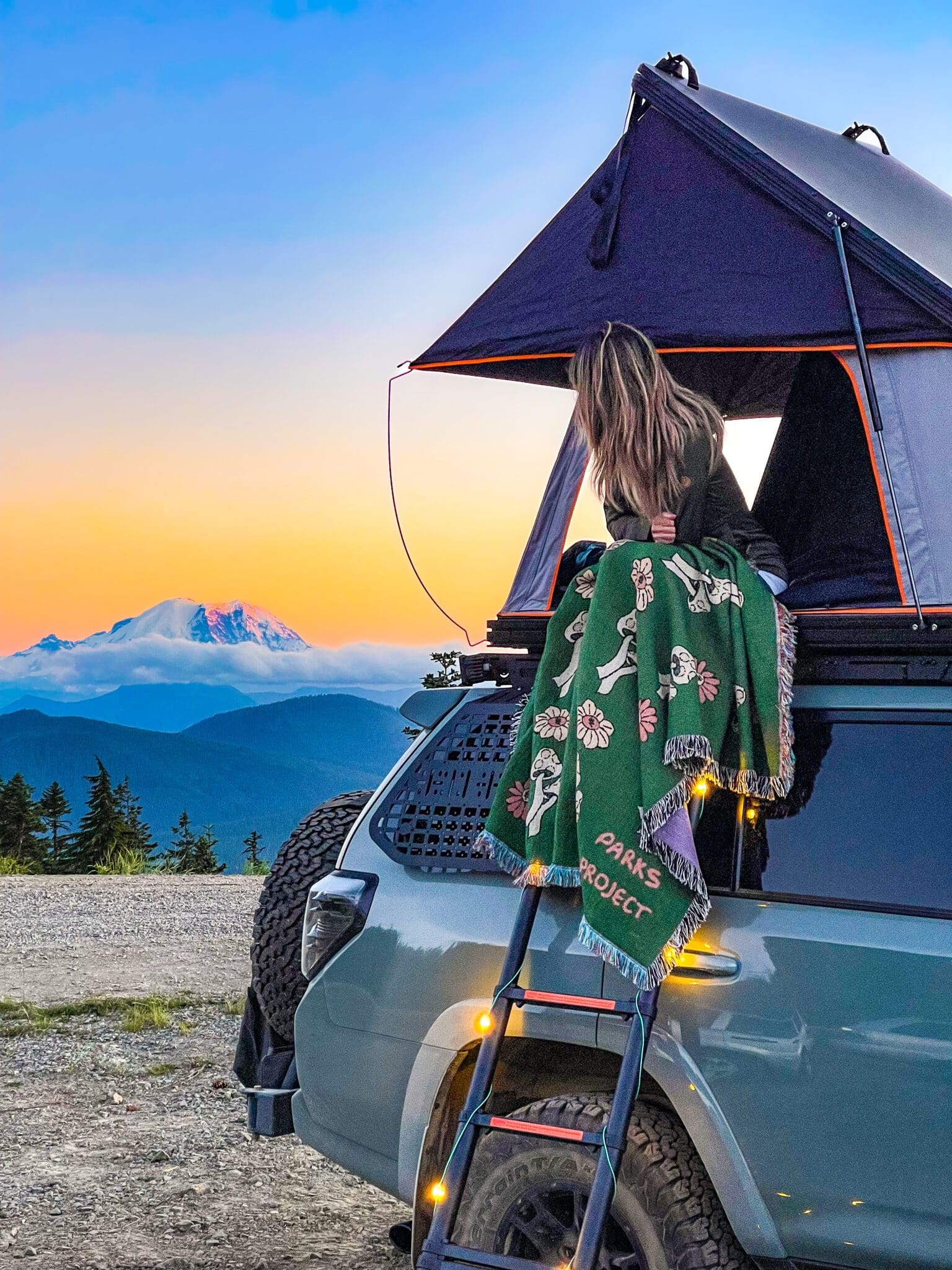
3) Dispose of waste properly.
When most people think of the Leave No Trace principles, they think of trash. Anything that is taken on the trails, should always be packed back out. Carry a plastic bag with you to collect any garbage, as well as human produced waste. If possible, utilize outhouses before starting your hike. Otherwise, deposit human waste in cat holes that are 6 to 8 inches deep & at least 200 feet away from water sources & trails. Don’t forget to pack out your used tissue paper & hygiene products!
While urine may have less direct effect on vegetation & soil, the salt that remains attract wildlife that may then dig up the soil around the area. Urinating on rocks or gravel is most ideal. Diluting it in a water bottle is even better!
In addition to bodily fluids, we also need to pack up all food & trash, including organic litter such as orange peels & nut shells. Although they may be biodegradable, they can bring curious wildlife closer to humans in a negative way! Even rinse water that was used for washing yourself or your dishes need to be either strained before scattering or taken back out with you.
4) Respect wildlife.
Those furry little woodland creatures may be cute, but please observe them from a safe distance. While some animals may appear fearless or try to approach you, all wildlife can be unpredictable. Also, do not touch or pick them up as they can harbor rabies or other diseases. If you spot an animal in distress, leave them alone & notify the land manager.
Try to abstain from feeding animals human food as they can become habituated & alter their natural behaviors. It is especially important to avoid wildlife during sensitive seasons when they are mating, nesting, or raising their young.
Additionally, check pet regulations before planning a trip to hike with your dogs. If your adventure companions are allowed, keep them properly leashed & under control at all times. Some trails have fragile, narrow paths which may become a challenge for other hikers who may not appreciate a loose dog approaching them.
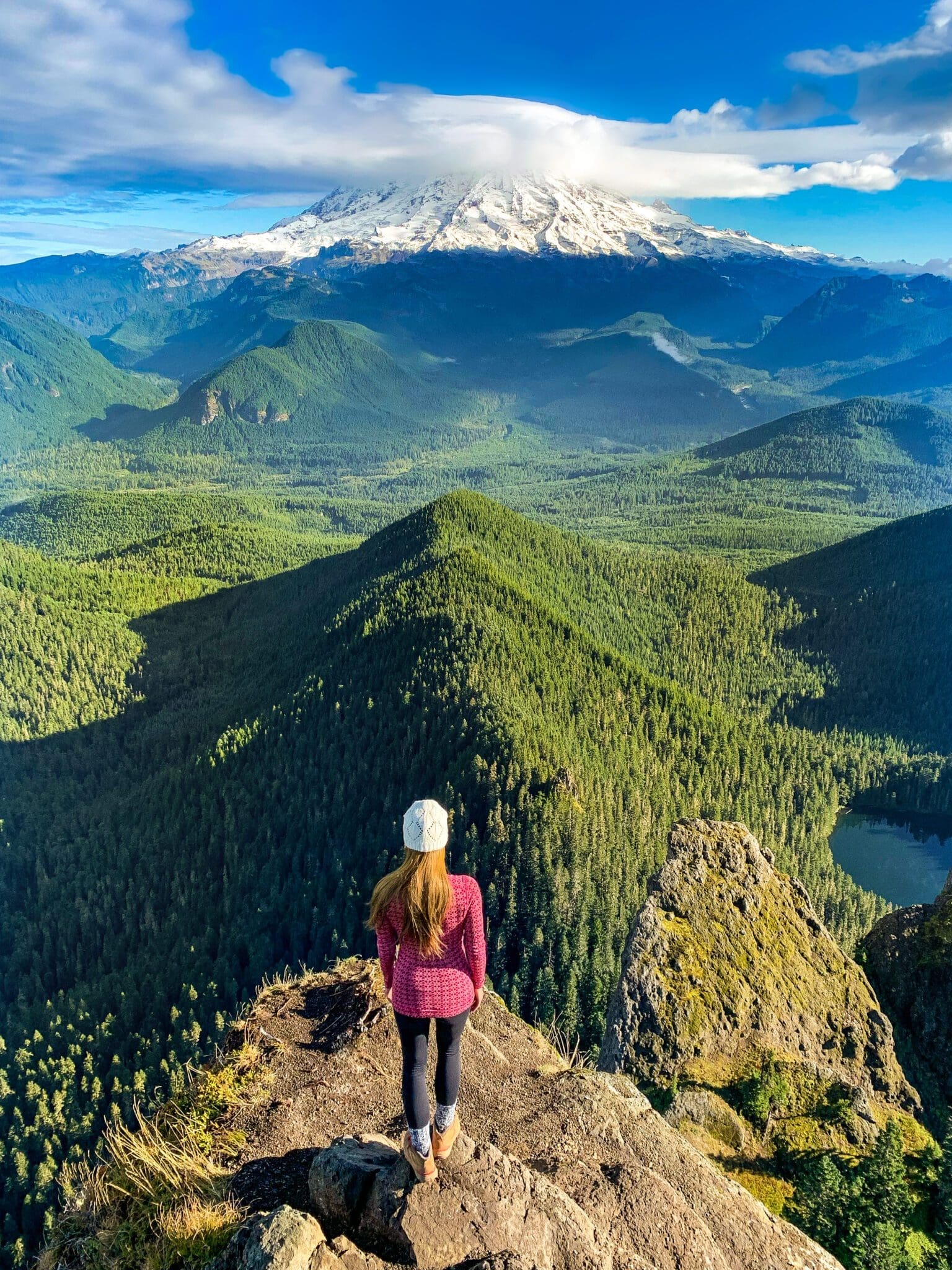
5) Leave what you find.
It is important to leave our lands exactly the way we found them. Leave a sense of discovery for the next hiker by leaving alone rocks, wildflowers, & archeological artifacts. If you clear an area to create a resting spot, be sure to recreate it back to the way it was. Keep in mind, It is actually illegal to remove natural objects from National Parks!
Additionally, avoid hanging things off of trees & never carve on their trunks. Some scientists claim they have research evidence that plants respond to “painful” stimuli. While trees obviously don’t have a nervous system like us humans do, they are living organisms that can feel certain vibrations.
“Take only memories, leave only footprints.”
Chief Seattle
6) Be considerate of others.
Our public lands are to be enjoyed by all. We just have to remember to be courteous towards each other. Try to minimize any loud conversations & do not blast music from electronic devices. Not only can this excessive noise disturb wildlife & flood the natural soundscape, but it can also ruin intimate moments for other hikers as well. Many people may be out to escape from the same kind of noise back home. Respect the quality of their outdoor experiences & promote positive memories that they can take with them.
When it comes to the rules of the “road”, stick to one side of the trail & when hiking in a group, stay in a single-file line. What most people forget is that hikers going uphill generally have the right of way. The reason for this is that hikers ascending an incline have a smaller field of vision & may be in their “hiking zone” which can make it more difficult to break their pace. If you are a fast hiker & am about to pass another hiker from behind, simply announce your presence by saying “excuse me”.
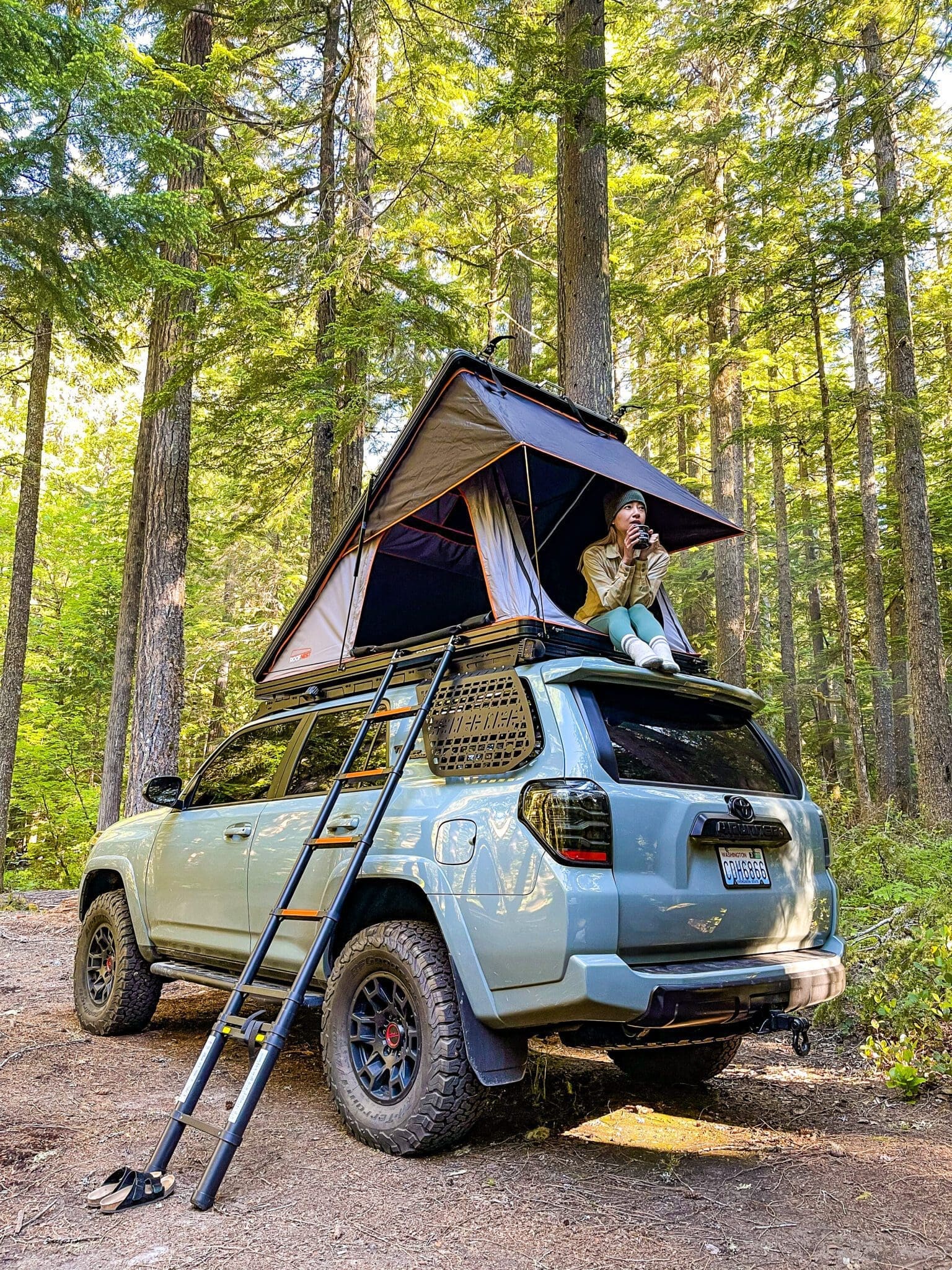
7) Minimize campfire impacts.
With rising incidences of wildfire events every year, we have to be more careful with our use of campfires. If you plan on building a fire, keep it small & within an existing fire ring, if available. Burn only for the time you plan on using it & allow any wood to completely burn to ash when putting it out. Don’t bring firewood from home as they may introduce new pests & diseases to the environment.
During peak wildfire season, obey burn bans or restrictions when they are in effect. There are other alternatives to starting a campfire including lightweight camp stoves & portable lanterns for light. The latest models are efficient, easy to use, & can operate in almost any weather condition.
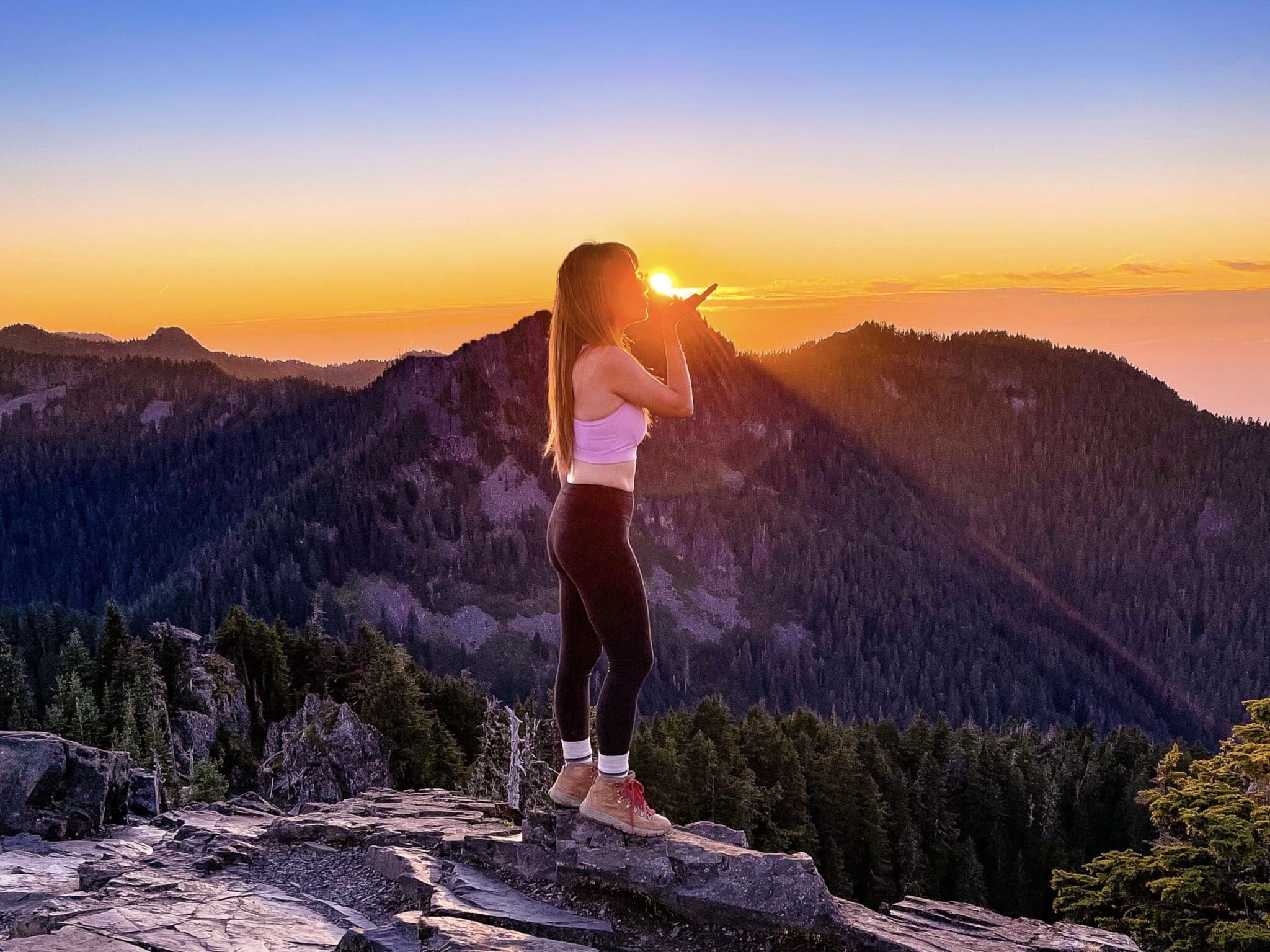
I truly hope that my posts will inspire people to visit the featured locations. At the same time, I wish for those experiences to turn into a greater appreciation for the outdoors. As people begin to voice their own opinions on preserving the wild through Leave No Trace principles, there will be recognition for more trail protection efforts & community education. If we work together to educate the less traveled about wilderness ethics, we can help build a sustainable future for the places we love to escape to & for many generations to enjoy.


Leave a comment